Brocky’s Daytona Coupe
The rear-drive V8 that killed an Aussie legend
BEFORE it actually happened, the idea of Peter Brock dying in a car seemed as absurd as Bjorn Borg being killed by a tennis racquet. Peter Perfect and cars were simply simpatico and he looked more at home moving at great speed than he did sitting still.
There were possibly times when some red-blooded Holden fans wished he might be damaged while dallying with Fords, or even Volvos, but in the end he died, tragically and inexplicably, in a car made up largely of Commodore SS bits.
The Daytona Coupe he was driving when he hit a tree while competing in the Targa West rally on September 8, 2006, was, as Brock put it himself in an interview the day before, “a beautifully designed local car with a retro body on it”.
The car was owned, and built, by Motec boss Richard Bendell and was a reproduction of the 1964 Shelby Daytona coupe (which was designed, ironically enough, by an American also named Peter Brock). While it featured a unique spaceframe chassis, its steering column, brakes, diff, wheels and controls were all from a Commodore SS.
Brocky, who was 61, was killed instantly by the impact with the tree, and the car was totalled. It has since been fully restored – at a rumoured cost of more than $150,000 – and been displayed since 2010 at Peter Champion’s Brock Experience in Queensland.
Since then the Daytona Coupe, along with the rest of Champion’s Brock collection, has been up for sale. Which just doesn’t seem right. Someone call Lindsay Fox.
His name lives on
Daytona Sports Cars Australia is still a going concern, operating in very small numbers, and as a mark of respect all cars built since his death wear special Peter Brock plaques in his memory.
Unfulfilled plans

The Chamberlains’ Torana
Hatching a bungled murder investigation THERE was a time when it was an acceptable jape to suggest that someone was “about as innocent as Lindy Chamberlain”. No doubt you remember her name, and the anonymous dingo, although you might be surprised to hear that she was born in New Zealand.
If you’re of a certain age, you’ll also remember the yellow Holden Torana hatchback that was at the centre of the debate over whether she killed her baby, Azaria, in 1980. She didn’t, of course, because courts of law have since decided that a dingo did steal her baby and that she therefore spent three years in prison, and drew the ire of a nation, for nothing. Lindy was awarded $1.3 million compensation in 1992.
The yellow 1977 V8 Torana was basically a crime scene, because it was where police found “indisputable evidence” of murder after tearing the car apart. In what Lindy’s husband Michael has since described as “a gross injustice”, a forensic biologist testified that there was baby’s blood in the boot and elsewhere, and the court accepted this version of events.
A royal commission eventually discovered that the “blood” was, in fact, a mixture of bitumen, sound deadener, some spilled milkshake and copper dust. It would be funny if it wasn’t so bloody awful. Lindy gave birth to her fourth child while in prison.
The car was sold by Michael Chamberlain to the National Museum in Canberra last year, wearing the ironic 4ENSIC number plates he’d chosen when he put it back on the road.
Ground-up resto After being utterly dismantled by the bumbling investigators, the infamous Torana was held by the Northern Territory authorities until 1990, when they shamefacedly handed the keys back to Michael, who restored it to its former glory.
Price of freedom Dr Chamberlain, who has not revealed what he was paid for the Torana, says the car “symbolises freedom as a result of the proper and independent revision of forensic science, which eventually saw Lindy exonerated”.
OJ Simpson’s Ford Bronco

More than 95 million people watched, live, in 1994 as OJ and his good mate Al Cowlings took more than 20 police cars and a swarm of news helicopters on a Blues Brothers-style car chase, albeit one held at just 50km/h, in a white 1993 Ford Bronco.
After the chase, OJ told police, “You let them all know I wasn’t running”, yet inside the Bronco police found a fake goatee and moustache with a bottle of make-up adhesive and receipts from a beauty store, along with Simpson’s passport and a gun.
The car became such a symbol of the polarising race debate around OJ’s trial that Ford saw it as a liability and discontinued the Bronco line in 1996.
Cowlings sold the car for a reported $200,000 in December 1995 – just two months after Simpson was acquitted of the murders against all expectation – because “he couldn’t drive it any longer” due to the publicity. It was reportedly sold to a porn baron, or shrewd investors who are still waiting to cash in almost 20 years later.
The Bronco has subsequently turned up in some odd places, like the lobby of the Luxor Hotel in Las Vegas in mid-2012, where it was used to promote a new museum of sporting memorabilia. Classy.
Fast food Domino’s Pizza enjoyed record sales during the chase, because most Americans were rooted to their television sets watching non-stop coverage. And getting hungry.
Doing time OJ Simpson is currently serving 33 years in the Lovestock Correctional Center in Nevada for kidnapping and armed robbery offences in 2008. He has never admitted guilt in the killings of his wife Nicole and her lover Ron Goldman.
JFK’s Lincoln Continental
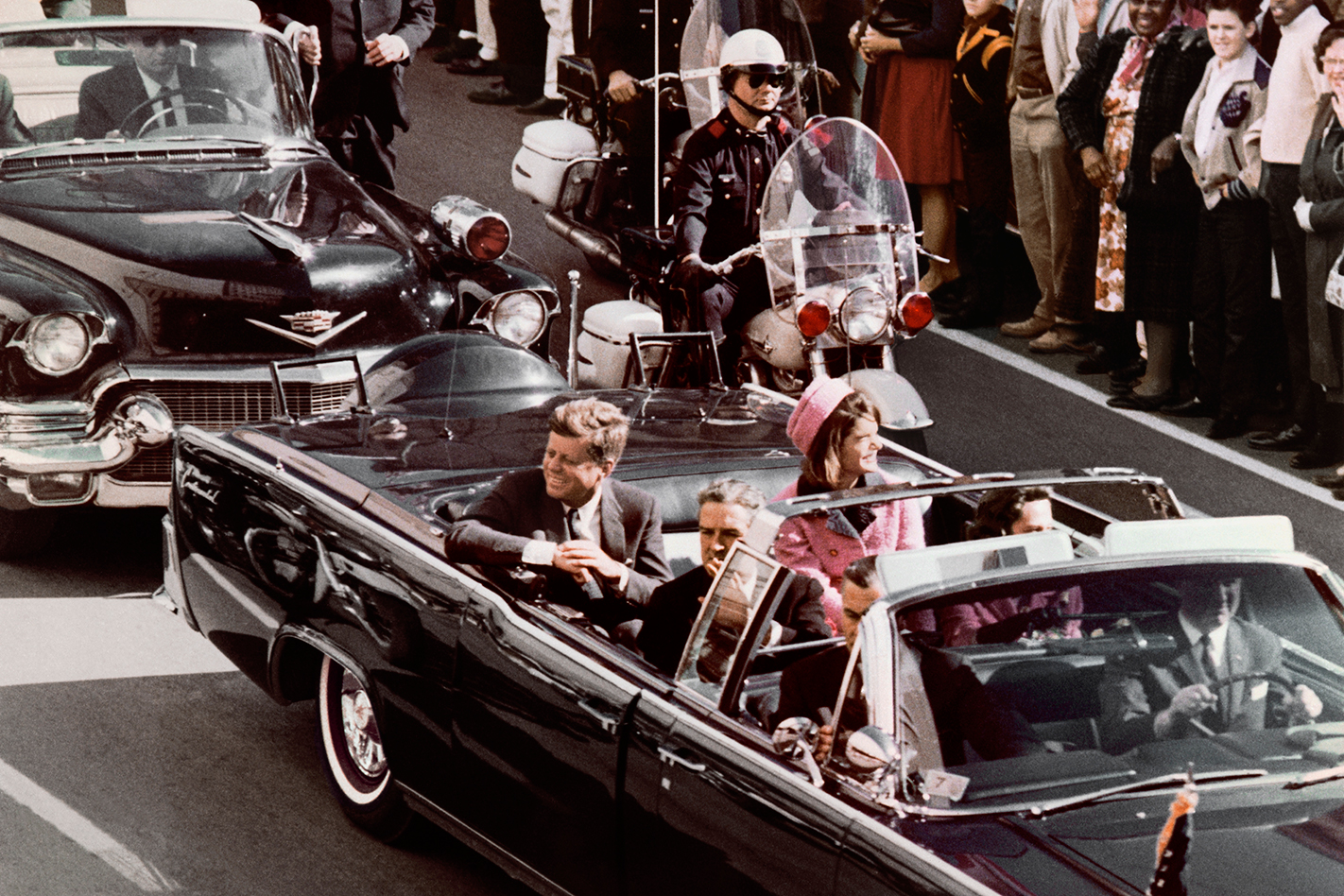
We’re all familiar with what happened next that notorious day in 1963, but what you might not know is that the special stretched blue Lincoln Continental convertible was put straight back into service, once they’d cleaned the brains out, and served another 13 years in the Presidential motorcade.
And just in case you think that Americans are simple, we’ll have you know that they painted it black, so no one would notice, and upgraded it with bulletproof armour before giving it to Lyndon B Johnson to drive around in (apparently he never felt very comfortable in it). It carried every President after that, up to Gerald Ford (1974-77).
The reason they kept in active service what has become an iconic piece of American history – and is now on show at the Henry Ford Museum in Detroit – was entirely pragmatic. It would have taken too much time, and money, to get a new one.
The car codenamed X-100 by the Secret Service was fitted with all kinds of then-exciting equipment, including a radio telephone, and the rear seat could be raised by hydraulics.
The total cost was about $US200,000 – quite a bit more than the $US7300 asking price for the standard car at the time – and that works out at around $US1.5 million (about $A2m) in today’s dollars, according to The Henry Ford.
Surely it wouldn’t have cost that much more to get one with a roof?
Eternal mystery The car’s original windshield, complete with bullet holes, is still held in the National Archives in Washington. And we still don’t really know whodunnit.
Too little, too late After the car was armoured – tragically after the horse had bolted – the total replacement value grew to about $500,000, or $US3.8m today. It is, of course, priceless now.
Princess Diana’s Mercedes
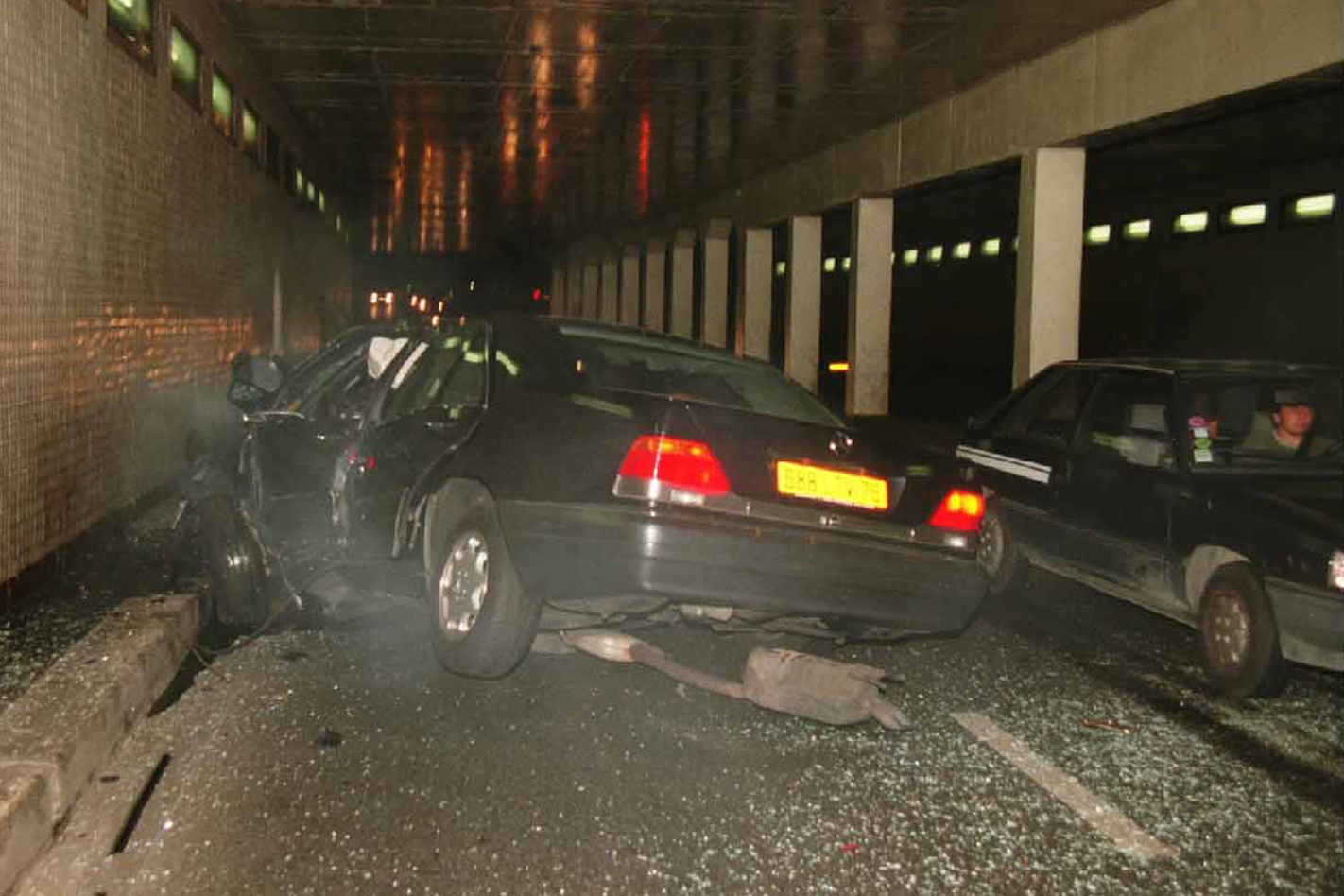
For the sharp public relations hack or company exec, it wouldn’t have taken many seconds to realise that this was not going to be a great advertisement for the safety systems and structural integrity of Benz cars, and an S-Class no less.
After the flurry of hatred for the media in general, sober analysis of the facts revealed that no production car would have survived the 100km/h impact with its safety cell, and its occupants, intact.
We also discovered that the driver, Henri Paul, was drunk, and that Diana and her boyfriend Dodi Fayed, inexplicably, weren’t wearing seatbelts. And during a high-speed car chase through the streets of Paris.
Not that that stopped the inevitable purveyors of conspiracy theories, most notably Dodi’s father, Ritz Hotel owner Mohamed al-Fayed, who has maintained it was a plot by the British Royal Family to do away with Diana and his son.
The impact with a column in the Pont de l’Alma road tunnel shoved the radiator into the front seat. Somehow the Princess survived the initial crash, only to die later in hospital. The badly battered remains of the car were held in a police depot in London until 2008, when the official inquest into Diana’s death was finished, and they were then melted down to make sure that none of the pieces fell into the hands of mawkish souvenir hunters.
The inside story Dodi Fayed’s bodyguard Trevor Rees-Jones somehow survived the massive impact. His face was reconstructed by surgeons, but still bears some scars from the crash. He documented the incident in The Bodyguard’s Story, published in 2000.
Why no belts? Extensive forensic examinations proved that the car was in perfect working order before the crash. So if there was nothing wrong with the seatbelts, why wouldn’t you use them?
Isadora Duncan’s Amilcar
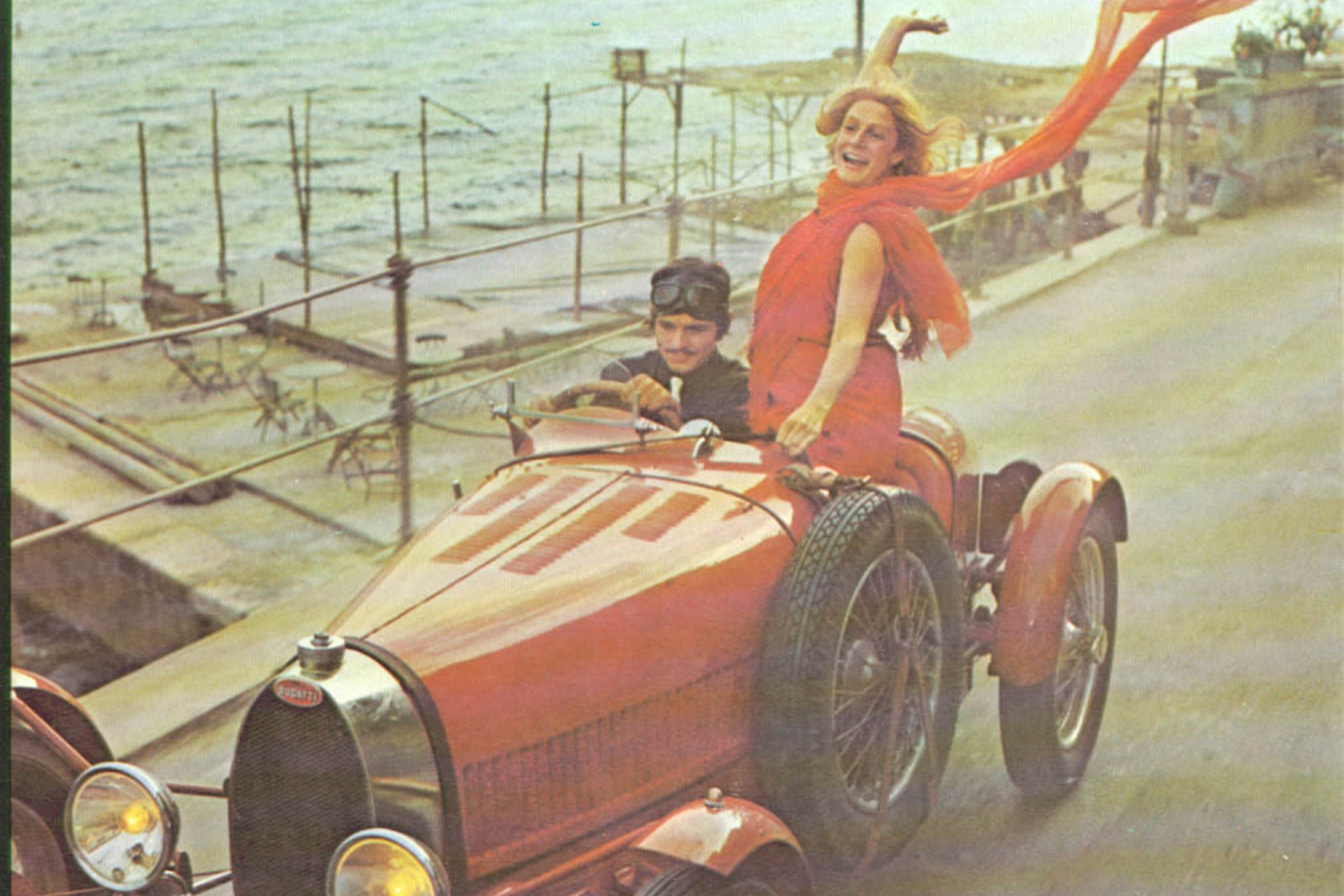
Sadly, she’s more famous for removing her top in a more spectacular way. In 1927, her long, flowing scarf got caught in the wheel of a French-made Amilcar – not a Bugatti as portrayed in the film of her life (above) – and very nearly decapitated her.
Duncan probably should have steered clear of cars. Earlier in her life, her driver neglected to set the handbrake on her vehicle and it rolled into the Seine in Paris, drowning her two children (both born out of wedlock) and her nanny.
The crazy communist was known for her flagrant affairs with lovers of both sexes and on the day of her death had just climbed into the Amilcar of a handsome mechanic when the scarf was caught in the spokes of the rear wheel, gripping around her throat so tightly that she was thrown from the car with her neck almost severed.
Her last words are reported to have been “farewell my friends, I go to glory”, but some doubt has been cast on this account, with one witness later admitting she’d actually said “I go to love” – as in, “it’s this mechanic’s lucky day”.
It wasn’t.
A car of little note Sadly, the Amilcar’s global fame doesn’t stretch much further than its celebrity infamy, but it was successful enough to be produced from 1921 to 1940, when some unpleasantness with the Germans put an end to production.
Red to the end Duncan’s high-profile conversion to communism included declaring herself a Russian citizen and therefore being exiled from the US at the age of 22. She lived in the Soviet Union and Europe until her death, at age 50.
Eddie Cochran’s Ford taxi
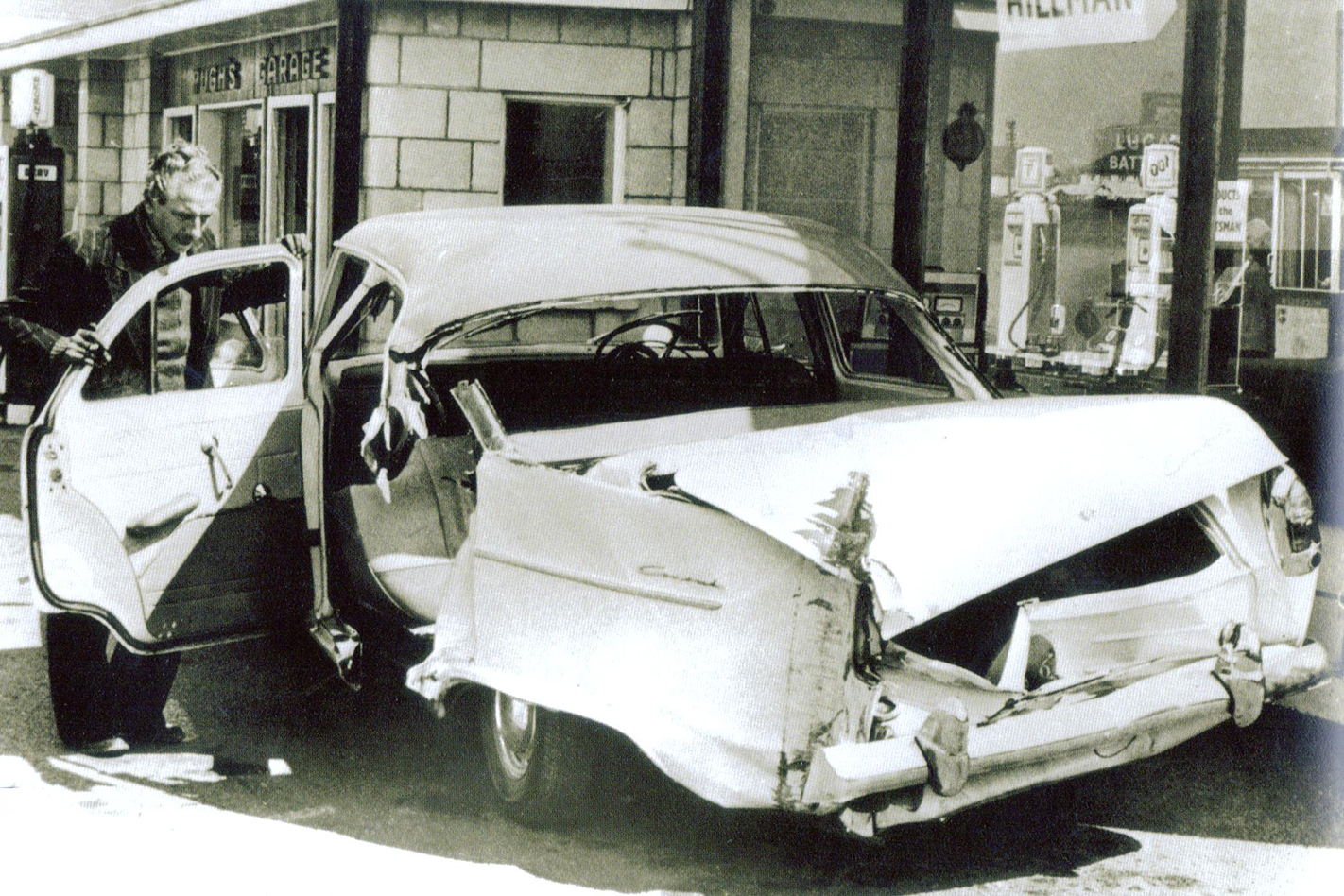
Whippersnappers among you might wonder who Cochran was, but even you youngsters would recognise his hits Summertime Blues and C’mon Everybody.
In the late 1950s he was a big deal, a hugely talented hunk – ominously described as “James Dean with a guitar” – who could play multiple instruments and even wrote his own songs. George Harrison was a big fan and Jimi Hendrix requested Cochran be played at his funeral. If you haven’t heard of them, please just move along.
In April 1960, Cochran had just finished a long wintery tour of England with friend and fellow rocker Gene Vincent. Understandably, they couldn’t wait to leave. With no late-night trains, a taxi – a Ford Consul Mark II as it happened – was called to take Cochran and three others to London; just outside the town of Chippenham the driver took a wrong turn into oncoming traffic, panicked, spun and hit a concrete pole.
Vincent broke several bones and the other occupants walked away largely unharmed, but Cochran was thrown into the roof and then out the door, landing on a grass verge.
Witnesses said the impact sounded like a plane crash, and Cochran died later that day in a hospital in Bath from his brain injuries, aged just 21.
Guitar man The first cop on the crash scene was one David Harman, who retrieved Cochran’s undamaged Gretsch guitar. Legend has it he used it in the lockup to learn to play, later changing his name to Dave Dee and having a string of hits in the 1960s.
American style Appropriately for Cochran, the Ford Consul Mark II, complete with tail fins and a bench seat, was an attempt by the Brits at imitating the 1950s gas-guzzling beasts that all the Americans looked so cool in.
James Dean’s Little Bastard
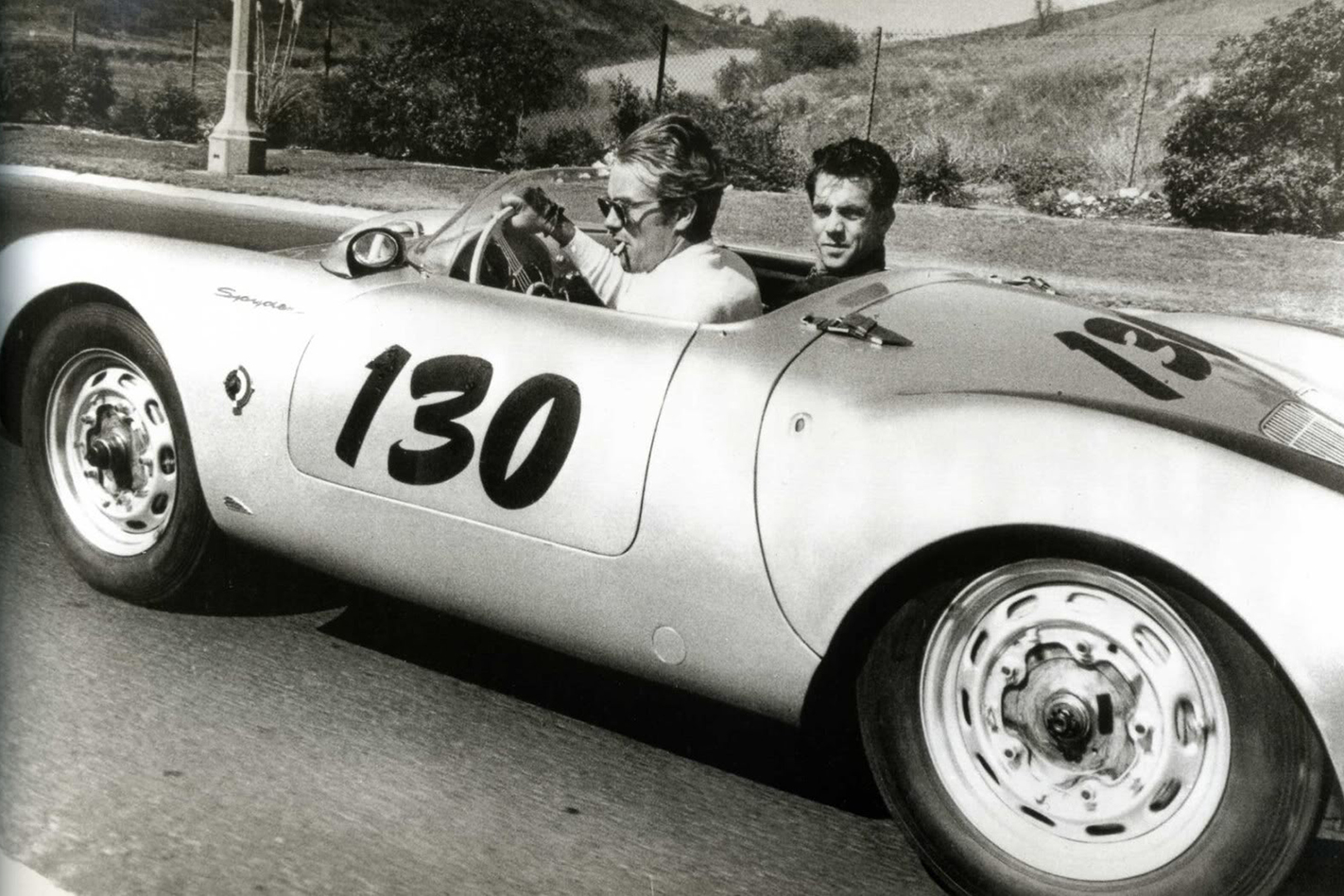
Legend has it that in September 1955, Dean met fellow actor Alec Guinness, who prematurely did his Obi-Wan Kenobi bit and told him that the car was “sinister” and that “if you get in that car, you will be found dead in it by this time next week”.
You know what happened next; one week later, a head-on accident, and Dean’s tragic death at the age of 24. However, it’s what the car did from then on that’s really interesting.
It started with George Barris, an American hot-rodder who gained fame in Hollywood for producing the original Batmobile and the Munster Koach. Barris, who may be a great storyteller, bought Little Bastard for $2500 and tells of how it slid off its trailer and broke a mechanic’s leg.
The engine and drivetrain were removed and sold to two different racers. While battling each other in cars using these bits, one of them lost control, hit a tree and died, while the other suffered a mysterious lock-up, rolled and was seriously injured.
Two of the tyres off the Porsche were reportedly sold and both, allegedly, blew out simultaneously, causing the car on which they were fitted to run off the road.
Barris eventually tried to get rid of Little Bastard, lending it to a highway-safety exhibit, but the garage it was stored in caught fire, miraculously causing almost no damage to Dean’s Death Car. And when those people tried to send it back to Barris, he says, it disappeared into thin air while in transit on a train.
Clearly, it’s back in Hell.
Highway patrol At 3.30pm on the day of his death, James Dean was pulled over for speeding, clocking an outrageous 65mph in an 55mph zone. Patrolman OV Hunter probably just wanted to take a selfie.
Wrong side turnup Dean’s crash happened when a guy called Donald Turnupseed drove his 1950 Ford Tudor coupe across the centre line and straight at Little Bastard. Dean apparently attempted evasive action, at 137km/h, but ploughed head-on into the Ford.
Paul Walker’s Carrera GT
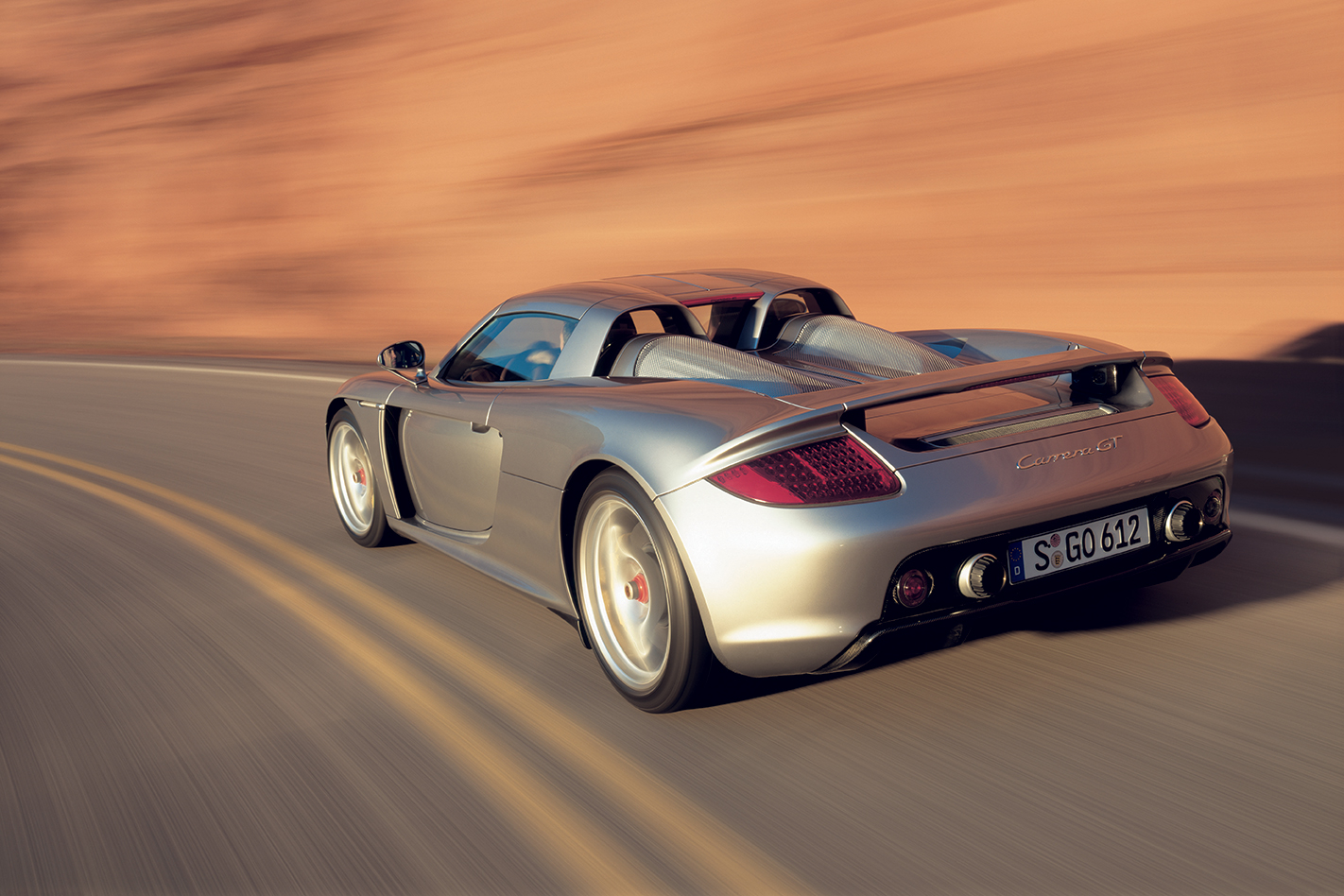
In a kind of horrible “seriously, kids, don’t try this at home” story, the star of The Fast and the Furious franchise was killed when his friend Roger Rodas’s Carrera GT basically disintegrated after colliding with poles and trees at a speed in excess of 150km/h, more than double the posted speed limit. Police suggested speed may have been a factor in the accident, which occurred in Santa Clarita, California, with Rodas at the wheel.
Despite those bald figures, Rodas’s widow, Kristine, filed a lawsuit suggesting Porsche was to blame for the death of her husband, a professional race driver, due to a suspension failure and a lack of safety features. Her suit suggests the 2005 Carrera GT was designed as a race car and therefore should have had a roll cage and been less flammable.
Not surprisingly, Porsche fired back through its lawyers, suggesting the deaths were entirely the fault of Rodas and his driving, and furthermore that the car in question had been “abused and altered after being placed into the stream of commerce in a manner that was not reasonable foreseeable”.
So, if you go and modify an already blisteringly quick car to go even faster, and then drive it like you stole it, that’s not Porsche’s fault.
Model behaviour Walker wasn’t just an actor who did teen films and six implausible movies about driving fast, he was also the face of Davidoff Cool Water for Men. When he died he was worth $25 million, all left to teenage daughter Meadow.
Musical tribute The neither haunting nor beautiful song See You Again, by the jaunty sounding Wiz Khalifa, from the Furious 7 soundtrack was a tribute to Walker.
Bonnie and Clyde’s Ford V-8

“While I still have got breath in my lungs I will tell you what a dandy car you make. I have drove Fords exclusively when I could get away with one,” he wrote, in a wonderful double entendre. “For sustained speed and freedom from trouble the Ford has got every other car skinned and even if my business hasn’t been strictly legal it don’t hurt anything to tell you what a fine car you got in the V-8.”
The letter was written at the height of Clyde’s infamy, in 1934, the same year he would die in a Ford, a 1934 V-8 Deluxe, which ended up so riddled with bullets it looked like something from a Road Runner cartoon.
Despite being heavily suspected of 13 murders and several bank robberies, Bonnie Parker and Clyde Barrow could only be chased by the FBI under the National Motor Vehicle Act, which allowed agents to pursue them across state lines, for stealing a car.
Heavily armed police from Texas and Louisiana eventually cornered the outlaws in an ambush, covering their Ford in a hail of more than 100 armour-piercing bullets of the “don’t even bother coming out with your hands up” variety.
The Deluxe “Death Car” became quite famous, and is certainly a sight to behold. After a lifetime touring county fairs, it was bought in 1988 by the Primm Valley Resort and Casino in Las Vegas for $250,000.
What stays in vegas Sitting among the pokies, the Bonnie and Clyde Death Car display in Vegas also features Clyde’s bullet-riddled “Death Shirt”, which has been signed by his sister, Marie. Sweet.
Just to be sure Here’s how the cops saw it: “We opened fire with the automatic rifles. They were emptied before the car got even with us. Then we used shotguns … After shooting the shotguns, we emptied the pistols at the car. We kept shooting at the car even after it stopped. We weren’t taking any chances.”
Citroen Traction Avant
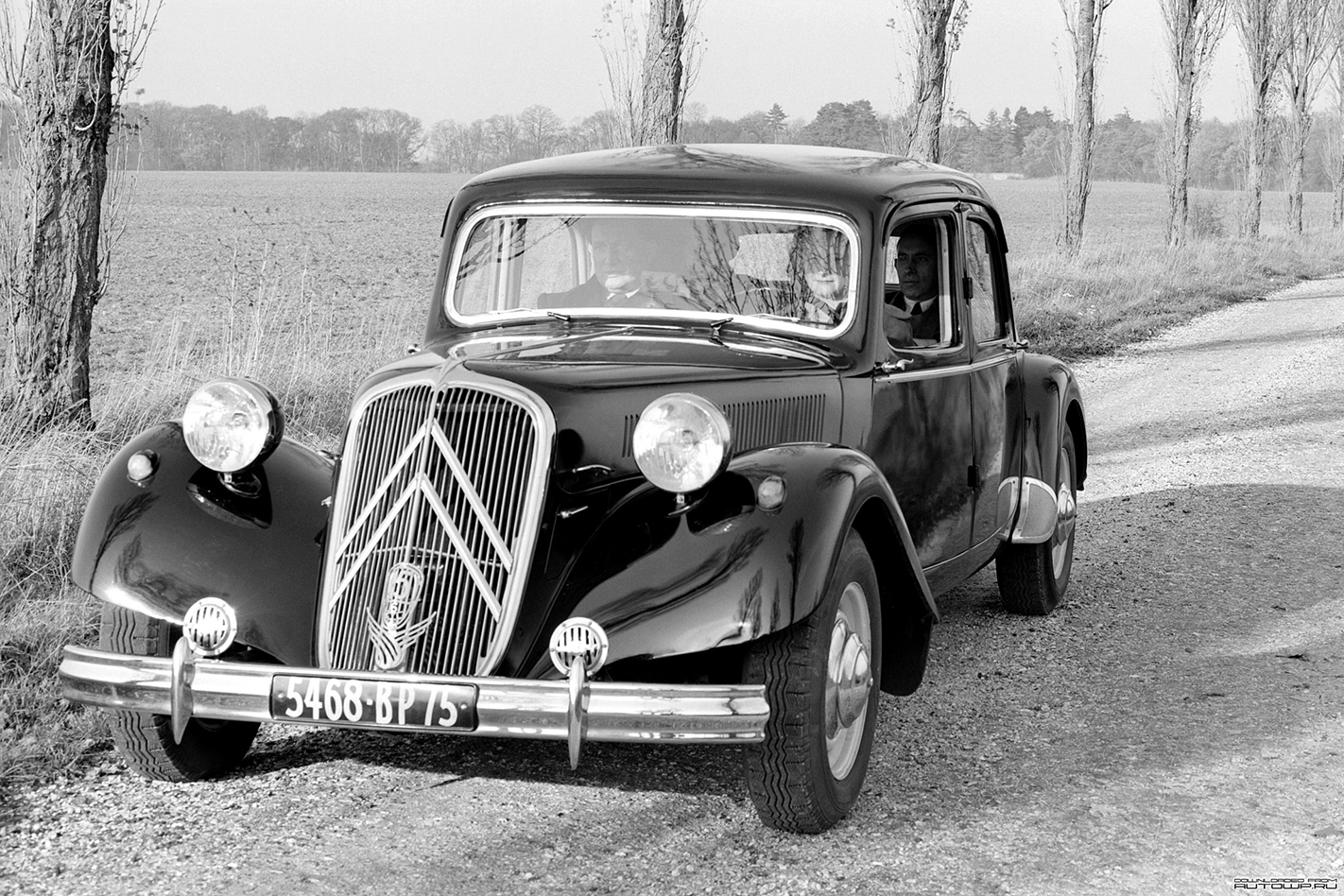
This grand-grilled Citroen became the transport of choice for the Gestapo, who had commandeered them as the Nazis rolled across France. The sight of a black Traction Avant arriving in the middle of the night must have injected terror into thousands of French residents as the notorious Flying Squads went about their evil business.
Confusingly, though, it might not have always been bad news. Rather cleverly, the plucky French resistance chose to use the Citroen as transport as well, as did the French mafia, including a gangster called Pierre ‘Le Fou’ Loutrel. A proper scoundrel, Le Fou was a Nazi collaborator when they were winning and then started gunning down the Germans when he sniffed the winds of change.
All of the warring, stealing and killing parties chose the Citroen because it was big, agile and, unlike many cars of the time, it could actually stop, thanks to hydraulic brakes. Styled by the great Flaminio Bertoni, an Italian-born former sculptor, the wicked-looking Traction Avant was ahead of its time in many ways and was the first mass-produced, unitary front-wheel-drive car. It was also built of steel at a time when coachbuilders were still making cars with wooden frames.
Independent suspension meant it even rode well, which prisoners being dragged off for torture must have appreciated.
Paying a price Andre Citroen, the company’s founder, probably died of a broken heart after the investment in Avant sent the company into bankruptcy. Michelin bought Andre out in 1934 and he died a year later.
Aim low, hit high Design targets for the Citroen Traction Avant were modest by today’s standards, with a top speed of 100km/h and economy of 10L/100km. It remained in production for 20 years.
Hank Williams’ Cadillac
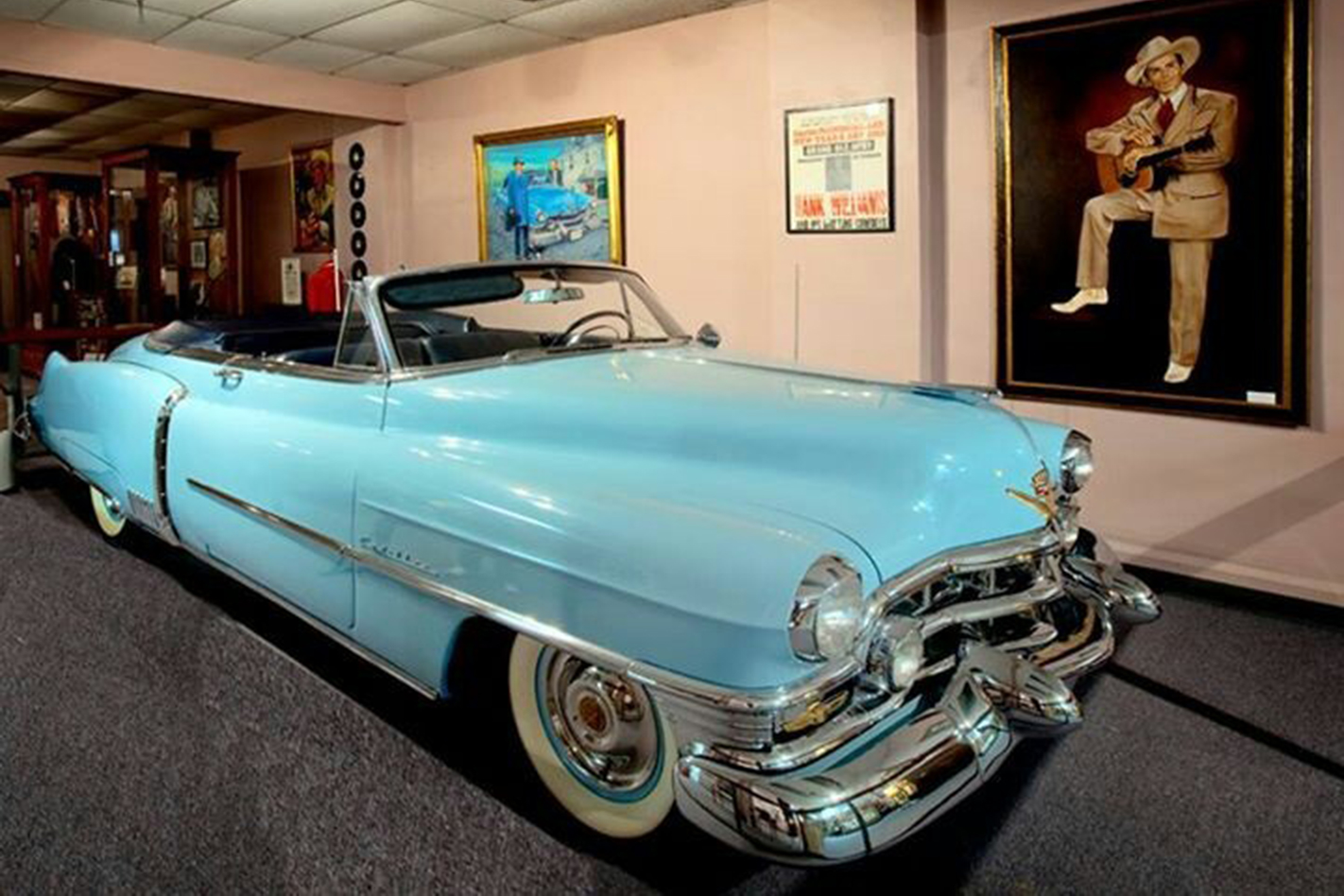
This could explain why college student Charles Carr, who he had hired to drive him to a gig in his beautiful 1952 Cadillac convertible, didn’t notice Hank had died in the back seat for so long that rigor mortis had set in by the time he grabbed his cold, dead hand to check for a pulse.
Williams had been booked to play a show on New Year’s Eve 1952 but couldn’t make it due to an ice storm, so he hired Carr to drive him to another gig the next day in Canton, Ohio. Williams, who had combined a few beers in the back seat with some pain-killing injections of vitamins and morphine, was writing a song in the car at one stage, but seems to have keeled over, suddenly and silently.
An estimated four hours later, Carr pulled over in Oak Hill, West Virginia, and found 29-year-old Williams unresponsive in the back; when he tried to lift his hand it was cold, and snapped back into place.
An autopsy later determined the cause of death to be “insufficiency of the right ventricle of the heart”, but there has long been controversy and suspicion over his demise, with some suggesting he may have been done in by a Carr, in a car.
Nudie run Williams died wearing something called a Nudie Suit, which is described as resembling a superhero outfit, or a jumpsuit. And you thought Elvis dressed badly.
Museum piece The Hank Williams Death Car is one of the star attractions at a museum bearing his name in his adopted home town of Montgomery, Alabama. No one is allowed to take photographs, or to touch the back seat.





